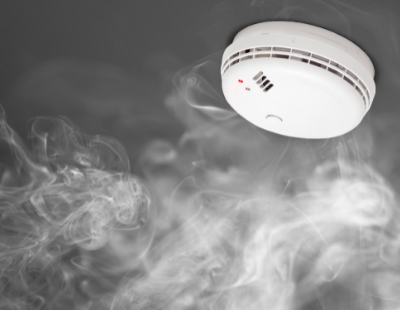A risk management service says agents and landlords must do more to create a culture of safety, particularly around fire.
Research released this week by the British Woodworking Federation found that a third of people would not bother to report a problem with a fire door. This is despite three quarters of people recognising that propping a fire door open stops it performing its role in the event of a fire.
Now Bureau Veritas wants agents and landlords, particularly those responsible for multi-occupancy buildings , to do more to ensure the safety of tenants.
John O’Sullivan, fire safety technical director at Bureau Veritas, says: “The focus has turned more towards the responsibilities of tenants in understanding and reporting fire safety hazards, however the onus cannot solely be put upon them. Landlords of large residential or commercial buildings must put in place a clear reporting pathway for tenants to follow, especially as 44 per cent of those polled said they would not know who to report a fire safety concern to.
“In addition, nearly a fifth of the public said they would be more likely to report fire door safety issues if there were personal repercussions for not doing so; in this case they must be reminded of the potentially life-threatening consequences of a fire door safety breach, both on themselves, their family or colleagues, and other people around the building.”
The Bureau says properly fitted and maintained fire doors are critical to the safe evacuation of a building in the event of fire, forming part of the compartmentation of the building and helping to retain the fire in its area of origin.
Poorly fitted, damaged or open fire doors allow smoke and heat into the escape routes within the building, which makes it much more difficult to evacuate and puts lives needlessly at risk. It is of the utmost importance that that each building has an asset register of fire doors to ensure it meets compliance requirements which now forms part of the fire risk assessment process.
O’Sullivan continues: “Whilst awareness of fire risk in multi-storey buildings has really come to the fore in recent years, following the Grenfell Tower fire and subsequent Hackitt Review, it is clear from the research that too many members of the British public are still unclear of the proper use of a fire door, and the vital importance of reporting any defects.
“For landlords or facilities managers who are unsure on how to bring fire door safety to the attention of their tenants, or the correct procedures to put in place, third party compliance specialists … are able to support you in achieving and maintaining compliance, knowing you’ve done all you can to keep your residents safe.”
Fire Door Safety Week was first launched in 2013, in response to a legacy of fire door neglect, and is managed by the British Woodworking Federation.
This year’s initiative, ending shortly, found:
· 10 per cent of respondents have seen a propped open fire door in their place of residence on some occasions and 20 per cent in the workplace. The two most common objects used to prop open a fire door are a wedge and a fire extinguisher;
· 31 per cent incorrectly believed that a fire door that was propped open was safe and 18 per cent didn’t believe a propped open fire door poses a risk to those in the building so wouldn’t take action;
· 44 per cent didn’t know what constitutes a safe fire door, believing either: a fire door is a normal door covered in fire-resistant paint (13 per cent), a fire door is a normal door but with ‘fire door’ signage (13 per cent), or that any timber door was a fire door (seven per cent).











%20-%20IMAGE%20Client%20Accounting%20%E2%80%93%20what%20are%20your%20options.jpg)









Join the conversation
Be the first to comment (please use the comment box below)
Please login to comment